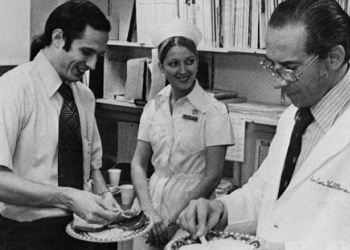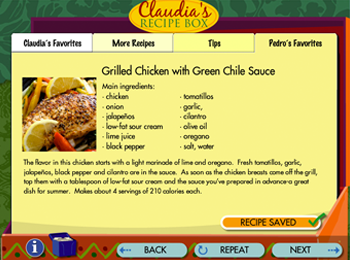Healthy cooking methods demystified

If you’re looking to make healthier meals, how you cook your food matters as much as what you decide to cook. A Baylor College of Medicine nutrition expert reviews some of the most commonly cooked foods and gives tips on what techniques to avoid in the kitchen.
“Awareness of ingredients used in cooking helps maintain a balanced diet. Using herbs and spices instead of salt can reduce sodium intake, which is beneficial for heart health, and cooking methods can significantly affect the nutrient content of food,” said Dr. Luis Rustveld, registered dietitian and assistant professor in the Department of Family and Community Medicine at Baylor. “Steaming vegetables retains more vitamins and minerals than boiling and grilling; baking instead of frying meats and veggies reduces added fats and calories.”
Eggs
A mainstay in many diets, eggs are a versatile food that can fulfill many nutritional needs when prepared correctly.
Scrambled
The upside is that eggs can be easily customized by adding vegetables, herbs and cheeses for extra nutrients and flavor. They are fast and easy to prepare. Scrambling breaks down the protein structure, making it easier for some people to digest.
However, scrambled eggs are often cooked with butter, oil or cream, which can add extra calories and fats if not monitored. Overcooking an egg can reduce the levels of heat-sensitive nutrients like certain B vitamins.
Poached
Poaching requires no added fats, making this method a low-calorie option. Gentle cooking preserves most of the egg’s nutrients. Poaching is a go-to method to monitor fat intake, particularly saturated fats.
Poaching can be tricky and it may take practice to not break the yolk. Without added fats or seasonings, poached eggs can taste bland unless herbs and spices (or other low-sodium and low-fat additives) are used.
Fried
Cooking in oil or butter enhances the dish’s flavor, creating a satisfying, savory plate. Fried eggs can be cooked to different levels of doneness and offer variety in texture.
Frying in oil or butter increases calorie and fat content, potentially contributing to a higher intake of saturated fats. Over-frying can lead to a rubbery texture and may destroy natural nutrients. Frying at high temperatures can create harmful compounds like acrylamides, especially if the oil is reused or overheated.
Potatoes
One of the most common carbohydrates, potatoes, regardless of variety, can be transformed into a rich culinary delight or incorporated into weight-loss-focused meals.
Roasted
Roasting can bring out a rich, caramelized flavor and create a crispy exterior while keeping the inside tender. Roasting requires minimal oil, making it a healthier choice compared to frying.
Roasting can take longer than frying, especially for large or dense pieces. If not monitored, roasted potatoes can become too dry or overcooked.
Fried
Frying gives potatoes a satisfying, crispy exterior, which is especially appealing for French fries or chips. Frying is a faster method compared to roasting or baking.
Frying involves using a significant amount of oil, increasing the potato’s calorie and fat content. High-heat frying, especially deep frying, can produce acrylamide, a potentially harmful compound. Fried potatoes can be greasy, making them heavier and less healthy to eat.
Baked
Baking requires little-to-no added fat, making it one of the healthiest methods for preparing potatoes. Baking preserves more of the nutrients, such as potassium and vitamin C. Baked potatoes can be topped with a variety of healthy ingredients, such as vegetables, lean proteins and yogurt (as an alternative to sour cream).
Baking can take considerable time, especially for large potatoes. Baked potatoes can dry out without proper preparation and are typically soft, lacking the crispy texture some prefer in roasted or fried methods.
Chicken
When prepared correctly, chicken can be both nutritious and delicious.
Roasted
Roasting can enhance the natural flavors of chicken, often producing a crispy skin while keeping the meat juicy. The dry heat of an oven allows for even cooking, which is great for whole chickens or larger cuts. After initial preparation, roasting requires minimal attention, making it convenient.
Roasting a whole chicken or larger cuts can take considerable time. Parts of the chicken, especially the breast, can dry out without proper monitoring or basting.
Fried
Frying gives the chicken a crispy, flavorful crust that is highly appealing. Frying is fast compared to roasting or baking.
But frying adds significant calories and fat, which can impact health if consumed frequently. High-heat frying can produce harmful compounds, like acrylamide. Fried chicken can be heavy and greasy to eat.
Pan-seared
Pan-searing is a quick method that can produce a flavorful crust with natural juices locked in. Pan-seared chicken is used as a base for various dishes and sauces, and compared to oven methods, pan-searing is easier to monitor and control.
Pan-searing requires close attention to avoid burning or uneven cooking. Depending on the amount of oil or butter used, the pan can be greasy.
Cooking with health in mind
It is possible to unintentionally make food less healthy (or dangerous to consume) through various cooking practices and choices. “When cooking in general, always remember general food safety,” Rustveld said. “Cook meat to the correct internal temperature to kill harmful bacteria, and wash produce to remove potential contaminants.”
Rustveld says to look out for the following missteps when cooking a nutritious meal.
- Overcooking, especially boiling, can lead to significant nutrient loss, particularly water-soluble vitamins like vitamin C and some B vitamins. Use steaming, microwaving or sautéing for minimal nutrient loss.
- Adding too much salt can increase sodium intake, contributing to high blood pressure and heart disease. Use herbs, spices, lemon juice or vinegar to enhance flavor without relying on salt.
- Using unhealthy oils high in saturated fats or trans fats can raise cholesterol levels and increase the risk of heart disease. Choose healthier oils like olive, avocado or canola oil, and avoid reusing oils for frying.
- Using too much butter or cream can significantly increase saturated fat and calorie content. Use healthier alternatives like Greek yogurt or moderate amounts of olive oil.
- Skipping whole grains and using refined grains like white flour or white rice removes fiber, vitamins and minerals from a dish. Choose whole-grain alternatives like brown rice, whole wheat bread and quinoa.
- Frying foods adds unnecessary fats and calories, potentially leading to weight gain and increased cholesterol. Try baking, grilling or air-frying instead for a healthier preparation method.
By Aaron Nieto



